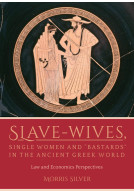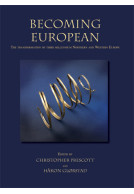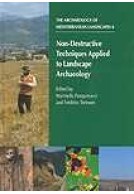Incomplete Archaeologies (Paperback)
Imprint: Oxbow Books
Pages: 176
Illustrations: black/white illustrations
ISBN: 9781785701153
Published: 31st December 2015
Script Academic
Pages: 176
Illustrations: black/white illustrations
ISBN: 9781785701153
Published: 31st December 2015
Script Academic
You'll be £9.95 closer to your next £10.00 credit when you purchase Incomplete Archaeologies. What's this?
+£4.99 UK Delivery or free UK delivery if order is over £40
(click here for international delivery rates)
Order within the next 7 hours, 22 minutes to get your order processed the next working day!
Need a currency converter? Check XE.com for live rates
(click here for international delivery rates)
Order within the next 7 hours, 22 minutes to get your order processed the next working day!
Need a currency converter? Check XE.com for live rates
Incomplete Archaeologies takes a familiar archaeological concept – assemblages – and reconsiders such groupings, collections and sets of things from the perspective of the work required to assemble them. The discussions presented here engage with the practices of collection, construction, performance and creation in the past (and present) which constitute the things and groups of things studied by archaeologists – and examine as well how these things and thing-groups are dismantled, rearranged, and even destroyed, only to be rebuilt and recreated.
The ultimate aim is to reassert an awareness of the incompleteness of assemblage, and thus the importance of practices of assembling (whether they seem at first creative or destructive) for understanding social life in the past as well as the present. The individual chapters represent critical engagements with this aim by archaeologists presenting a broad scope of case studies from Eurasia and the Mediterranean. Case studies include discussions of mortuary practice from numerous angles, the sociopolitics of metallurgy, human-animal relationships, landscape and memory, the assembly of political subjectivity and the curation of sovereignty. These studies emphasise the incomplete and ongoing nature of social action in the past, and stress the critical significance of a deeper understanding of formation processes as well as contextual archaeologies to practices of archaeology, museology, art history, and other related disciplines. Contributors challenge archaeologists and others to think past the objects in the assemblage to the practices of assembling, enabling us to consider not only plural modes of interacting with and perceiving things, spaces, human bodies and temporalities in the past, but also to perhaps discover alternate modes of framing these interactions and relationships in our analyses. Ultimately then, Incomplete Archaeologies takes aim at the perceived totality not only of assemblages of artefacts on shelves and desks, but also that of some of archaeology’s seeming-seamless epistemological objects.
Other titles in Oxbow Books...















